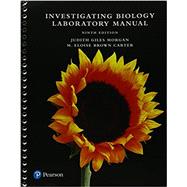With its distinctive investigative approach to learning, this best-selling laboratory manual is now more engaging than ever, with full-color art and photos throughout. The lab manual encourages students to participate in the process of science and develop creative and critical-reasoning skills.











